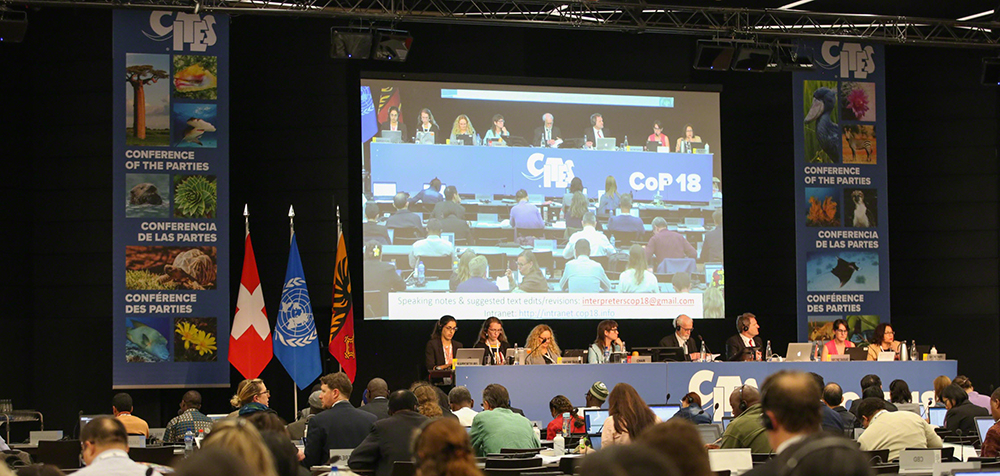
29 Aug 2019 Updates from FACE on CITES CoP18, the world’s biggest wildlife conference concluded yesterday in Geneva
The 18th meeting of the Conference of Parties to CITES concluded yesterday in Geneva. CITES is the Convention on International Trade in Endangered Species of Wild Fauna and Flora. During the past 2 weeks the parties and observers discussed 56 species listing proposals and more than 150 working documents. FACE followed discussions on Reeve’s Pheasant, Giraffe, Rhino, Elephant, Lion, Leopard and many more.
In close cooperation with the Safari Club International (Foundation), FACE associate members and other stakeholders, the valuable contribution of hunting to conservation around the world was represented during many discussions. There are many success stories, like the north American model of wildlife conservation in general, to specific species, like the Rhino and Giraffe in southern African countries or the Markhor in Asia.
Reeve’s Pheasant
The wild population of the Reeve’s pheasant, which is endemic to China, is experiencing problems. Historically, it experienced unsustainable harvest, but nowadays receives the highest form of protection in China, prohibiting take from the wild and trade. Current threats are habitat destruction and range contraction, with indications that some international trade from the wild populations might still occur. During this conference, the Reeve’s pheasant was listed in Appendix 2. There are some established populations in Europe, to which this change does not have an effect. The listing will have an effect on trade in the Reeve’s pheasant (including eggs and feathers) from or out of the EU, but not inside the EU’s internal market.
Giraffe
The Giraffe’s conservation status is fragmented due to regional differences. In general, the populations in southern Africa are doing well, where there is well-managed hunting. Other populations are being threatened by extinction, with issues like habitat destruction, civil unrest and poaching. The Giraffe has been listed in Appendix 2 of CITES, after a long discussion ranging from regional differences to successful conservation. The CITES parties did not accept a split listing. A CITES Appendix 2 listing will require hunters to have an export permit from the country where the Giraffe is hunted.
Rhino
Recognising the conservation success of the Black Rhino in South Africa and the valuable role of hunting in its conservation, CITES parties decided to change the quota for hunting trophies for South Africa. Instead of a fixed quota of 5 trophies, South Africa will use a scientific approach to determine an adaptive quota.
Namibia requested a down listing from Appendix 1 to Appendix 2 for its population of the Southern White Rhino. The population in Namibia has grown from 16 animals in 1975 to the current national population of 1037. The majority of the population is privately owned. Although this is a clear conservation success, which should be reflected in the CITES appendices, the CITES parties did not support Namibia. The proposal was rejected after a secret ballot.
DOWNLOAD PRESS RELEASE - EN
